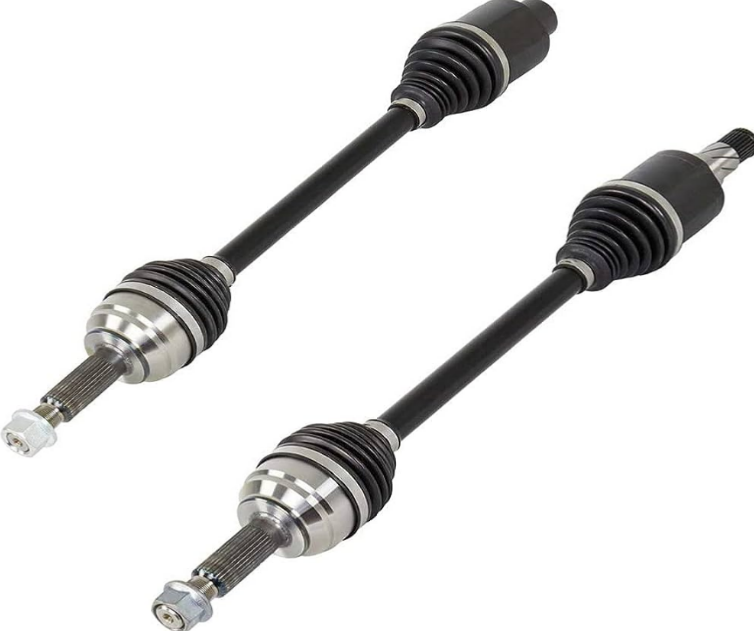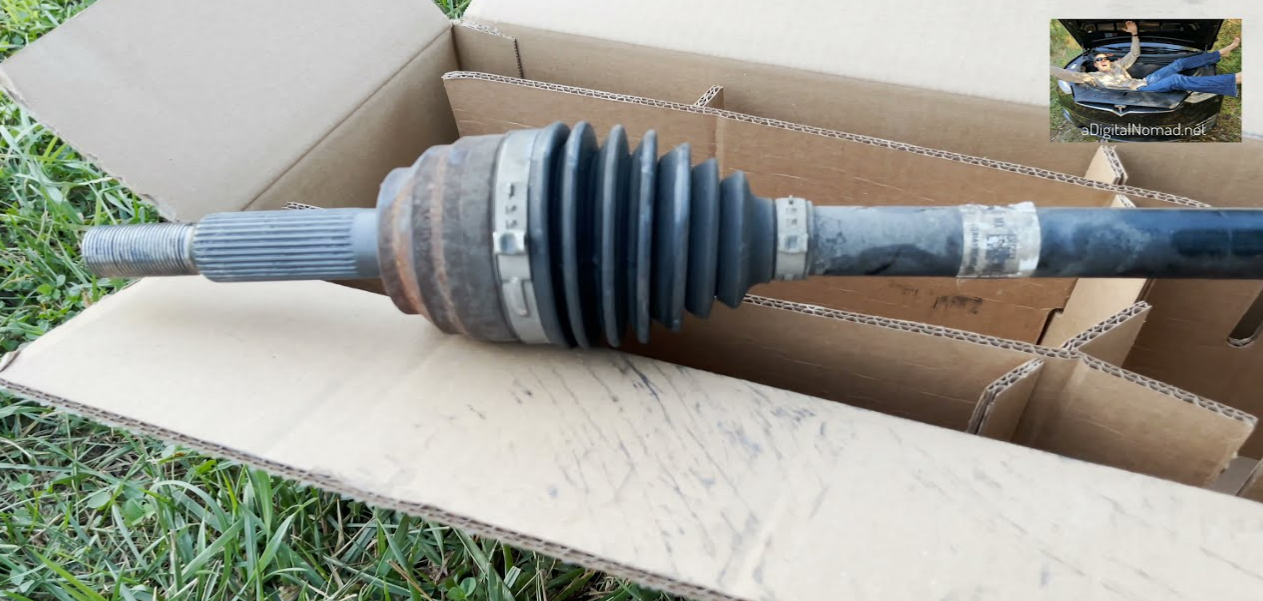Yes, Tesla cars use CV axles to efficiently transfer power from their electric motors to the wheels.
Understanding CV Axles
CV (Constant Velocity) axles, commonly found in many vehicles, play a crucial role in transferring the power generated by the engine to the vehicle’s wheels. They are especially pivotal in front-wheel drive and all-wheel drive vehicles.

What are CV Axles?
CV axles are designed to deliver consistent power to the wheels, regardless of their turning angle or up-and-down motion from the vehicle’s suspension. They consist of two CV joints: the inner joint and the outer joint. These joints allow the axle to flex in different directions, accommodating the wheel’s motion.
The term “constant velocity” refers to the axle’s ability to maintain a consistent rotational speed without any significant fluctuations, which ensures smoothness in power delivery. This design is in contrast to traditional drive shafts, which can struggle with variable angles and motions.
If you’re curious about the exact mechanics and design, the Wikipedia page on CV joints provides a comprehensive overview.
Importance of CV Axles in Traditional Cars
In traditional gasoline-powered vehicles, power begins with the engine and is transferred through the transmission. The CV axles then take this power and relay it to the wheels, allowing the vehicle to move forward or backward.
The unique design of CV axles makes them indispensable for cars, especially those with front-wheel or all-wheel drive configurations. They ensure that power delivery remains consistent, even when the wheels are turning or when the vehicle is navigating bumpy terrains.
A malfunctioning CV axle can cause problems, such as a clicking noise when turning or vibrations at high speeds. For more insights into the signs of a failing CV axle and its implications, consider browsing the Wikipedia article on drive shafts, which touches upon some related topics.
Tesla’s Propulsion System
Tesla, as a leading electric vehicle manufacturer, has revolutionized the automotive industry with its innovative electric propulsion systems. Unlike traditional combustion engines, Tesla vehicles rely on electric motors for propulsion. These motors have their unique design and operational features that provide Tesla cars with distinct advantages.

Tesla’s Electric Motor Design
Tesla primarily uses two types of electric motor designs: the induction motor and the permanent magnet synchronous motor (PMSM). The induction motor, initially popularized by the works of Nikola Tesla himself, uses electromagnets to produce rotation. On the other hand, PMSMs utilize permanent magnets in their design, delivering high efficiency, especially at lower speeds.
One standout feature of Tesla’s electric motor design is its compactness. These motors are not only smaller in size compared to traditional engines but also offer a higher power density. Additionally, they are simpler with fewer moving parts, leading to less wear and longer lifespan.
For those intrigued by the technicalities of electric motors, the Wikipedia page on electric motors offers a deep dive into their functioning and types.
Comparing Traditional Engines with Tesla’s Electric Motors
Traditional internal combustion engines burn fuel to produce motion, a process that inherently involves numerous parts, complexities, and inefficiencies. These engines produce power in cycles, leading to variations in power delivery and the need for complex transmission systems.
In contrast, Tesla’s electric motors deliver power instantly. This direct power delivery results in rapid acceleration, one of the defining features of Tesla vehicles. Electric motors also boast of a broader torque curve, ensuring consistent power across a wide range of speeds.
Besides performance, electric motors are more energy-efficient than combustion engines. Where traditional engines might lose energy in the form of heat, noise, and exhaust, electric motors convert a more significant portion of electrical energy directly into motion. The environmental benefits are clear too, as electric motors produce zero emissions at the point of use. For an extensive comparison between electric motors and internal combustion engines, the Wikipedia page on internal combustion engines provides valuable insights.
Tesla and CV Axles
Tesla’s approach to vehicle design showcases how innovation can redefine traditional automotive engineering concepts. One such area of interest revolves around the usage (or non-usage) of CV axles in Tesla vehicles.
Do Tesla Cars Employ CV Axles?
Yes, Tesla cars use CV axles. Despite being electric vehicles, Tesla cars, especially those with all-wheel-drive configurations, need a mechanism to transfer power from the electric motors to the wheels consistently. CV axles fulfill this requirement effectively. Just like in traditional vehicles, CV axles in Tesla models enable smooth power transfer while accommodating the wheels’ varying angles and motions during turns or while navigating uneven terrains. For a deeper understanding of CV axles’ structure and operation, you can visit the Wikipedia page on CV joints.
Reasons for the Presence or Absence of CV Axles in Tesla Cars
The presence of CV axles in Tesla cars can be attributed to their design and driving dynamics. Tesla vehicles, with their instant torque delivery and performance-oriented features, require robust and flexible systems to ensure the power from the motors reaches the wheels efficiently. CV axles, with their unique design, are well-suited for this role, ensuring seamless power delivery even under challenging driving conditions.
However, it’s essential to note that the exact configuration and design may vary across different Tesla models. While all-wheel-drive Teslas employ CV axles for both front and rear wheels, rear-wheel-drive models might have a different setup. The continuous evolution in automotive design also means that future Tesla models might incorporate newer technologies that could either enhance or replace the function of CV axles.
For an in-depth look into Tesla’s engineering choices and how they compare to traditional vehicles, the Wikipedia page on Tesla, Inc. can be a valuable resource.
Benefits of Tesla’s Design Choices
Tesla’s rise to the forefront of the automotive world stems from its innovative design choices. By rethinking traditional vehicle engineering, Tesla has brought forth numerous benefits in terms of efficiency, performance, maintenance, and longevity.
Efficiency and Performance
Tesla vehicles stand out due to their exceptional efficiency and performance metrics. The core of this advantage lies in their electric motor design, which delivers instant torque. As a result, Tesla cars can achieve 0 to 60 mph in impressively short durations, setting benchmarks in their respective segments.
Another facet of their efficiency relates to energy consumption. Electric motors inherently have higher energy conversion rates than internal combustion engines. This means that a larger portion of the energy from the battery gets used for propulsion, resulting in longer ranges and better mileage.
The aerodynamics of Tesla vehicles further complements their efficiency. With meticulously designed curves, Tesla vehicles reduce air resistance, enabling them to travel longer distances on a single charge. To dive deeper into the world of electric vehicle efficiency, the Wikipedia page on electric vehicle efficiency provides comprehensive insights.

Maintenance and Longevity
One of the striking benefits of Tesla’s design choices revolves around maintenance. Electric motors, with fewer moving parts than combustion engines, are less prone to wear and tear. This simplicity translates to fewer maintenance requirements, such as no oil changes, and longer intervals between servicing.
Additionally, Tesla’s battery technology plays a pivotal role in ensuring vehicle longevity. With advancements in battery management systems, these batteries can last for hundreds of thousands of miles with minimal degradation. While every battery has a lifespan, Tesla’s focus on battery research ensures that their vehicles remain on the road for extended periods.
Furthermore, over-the-air (OTA) software updates allow Tesla vehicles to receive performance enhancements, feature additions, and even fixes without the need for physical servicing. This continuous improvement approach ensures that Tesla vehicles get better with time.
For a broader understanding of electric vehicle maintenance, the Wikipedia page on electric car use offers a wealth of information.
